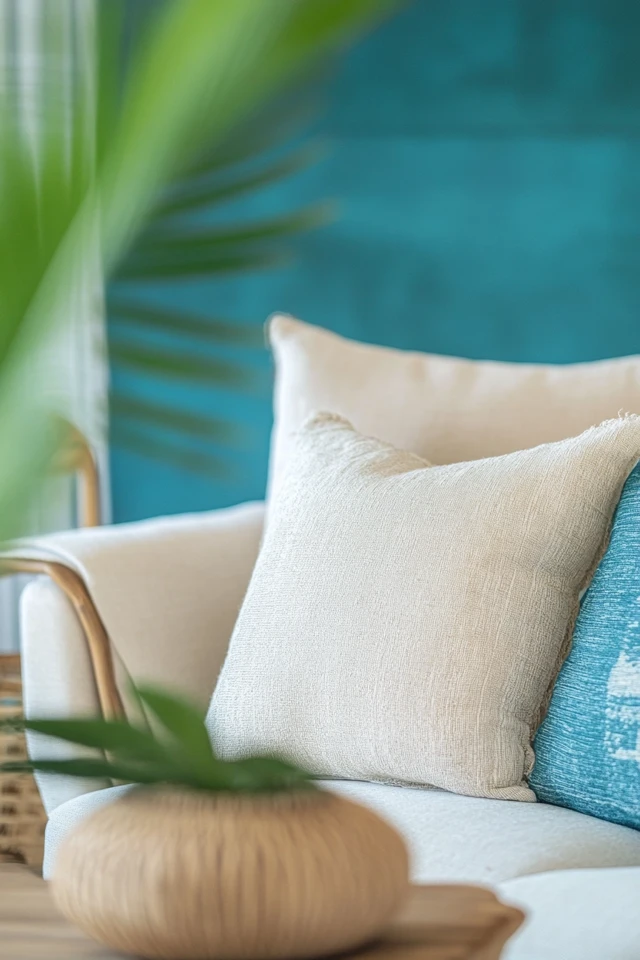Introduction
There’s something magical about the coastal vibe—it’s tranquil yet invigorating, serene yet full of life. But how do you bring that feeling into your room when the ocean is miles away? The secret lies in color. I’ll never forget the first time I styled a coastal-inspired room. I was nervous about overloading the space with “beachy” clichés, but I discovered that a thoughtful color palette could do all the work. By layering soft blues, sandy neutrals, and crisp whites, my room instantly transformed into a space that felt fresh and peaceful, as if the sea breeze could blow through at any moment.
Using color to create a coastal vibe is all about balance—finding the perfect mix of tones and shades to evoke the calming energy of the ocean without being too literal. In this guide, I’ll show you how to choose and layer colors to turn your room into a coastal escape you’ll never want to leave.
Why Colors Matter in Coastal Design
Key Benefits of a Coastal Palette
- Evokes Nature: Colors inspired by the sea, sky, and sand create a natural, grounded feel.
- Promotes Relaxation: Soft, soothing tones calm the mind and encourage relaxation.
- Enhances Brightness: Light, airy colors make your room feel more open and inviting.
- Timeless Appeal: Coastal palettes are classic and work with a variety of decor styles.
1. Start With a Neutral Base
Why It Works
A neutral foundation provides a blank canvas that allows coastal accent colors to shine.
How to Do It
- Use crisp whites for walls, trim, or ceilings to mimic the airy brightness of a beach house.
- Incorporate sandy beige or taupe for larger furniture pieces like sofas or area rugs.
- Opt for light gray tones to evoke the soft hues of weathered driftwood.
- Keep your base palette simple and consistent to create a cohesive look.
2. Add Layers of Blue
Why It Works
Blue is the quintessential coastal color, evoking the sky, ocean, and waves.
How to Do It
- Use soft, muted blues like sky blue, aqua, or seafoam green for a subtle, relaxing vibe.
- Incorporate deeper blues like navy or teal for contrast and richness.
- Add blue accents through throw pillows, blankets, or artwork.
- Experiment with ombre effects or watercolor patterns to mimic the fluidity of water.
3. Bring in Earthy Tones
Why It Works
Earthy colors like sandy beige, terracotta, and warm browns ground your space and reflect the natural beauty of the beach.
How to Do It
- Use woven materials, like jute or rattan, in their natural hues to add texture.
- Add warm, neutral tones in wooden furniture or accessories.
- Incorporate light terracotta vases or planters for a subtle nod to sunbaked coastal landscapes.
- Mix these tones with whites and blues for a well-rounded palette.
4. Incorporate Greenery-Inspired Hues
Why It Works
Pops of green bring life to the space and reflect the vegetation often found near the coast.
How to Do It
- Add soft sage or olive green through accent pieces like cushions or vases.
- Use plant-inspired greens in artwork or decorative objects.
- Incorporate greenery through plants like palms, succulents, or ferns to complement the color palette.
- Stick to muted greens to maintain the soothing coastal aesthetic.
5. Use Accents of Sunshine and Coral
Why It Works
Touches of warm colors, like coral or soft yellow, mimic sunsets and seashells, adding energy and contrast to the palette.
How to Do It
- Incorporate coral throw pillows or a small accent chair for a playful pop of color.
- Use soft yellows or golds in decor pieces like table lamps or picture frames.
- Pair warm colors sparingly with the blues and neutrals to avoid overpowering the serene vibe.
- Include subtle patterns that combine warm tones with your primary color palette.
6. Experiment With Stripes and Patterns
Why It Works
Patterns like stripes and waves evoke the nautical and dynamic nature of coastal living.
How to Do It
- Add striped curtains, rugs, or cushions in blue and white for a classic look.
- Use patterns that feature subtle ocean motifs, like waves, shells, or coral.
- Pair bold patterns with solid colors to maintain balance in the space.
- Experiment with mix-and-match textiles, like woven patterns and geometric designs.
7. Introduce Shimmering Metallics
Why It Works
Metallic accents mimic the sparkle of sunlight on water, adding a touch of elegance to your coastal room.
How to Do It
- Use brushed brass or gold finishes on lamps, frames, or mirrors.
- Incorporate silver or nickel accents for a cooler, modern take.
- Add mother-of-pearl or capiz shell decor for a subtle, iridescent effect.
- Keep metallics minimal and balanced to maintain the natural feel of the room.
8. Balance Cool and Warm Tones
Why It Works
The perfect coastal palette balances cool tones like blue and green with warm neutrals to create a harmonious and inviting space.
How to Do It
- Pair cool blues with warm beige or wood tones to soften the palette.
- Use white or light gray to bridge cool and warm tones seamlessly.
- Add warm-toned decor like coral throws or terracotta planters to complement cooler shades.
- Experiment with textures like woven fabrics, weathered wood, and ceramics to tie the palette together.
9. Reflect Light With Your Palette
Why It Works
Coastal rooms thrive on brightness, and light-reflective colors amplify natural light to make the space feel open and airy.
How to Do It
- Use high-gloss or semi-gloss paint finishes on walls or trim to reflect light.
- Add mirrors with light wood or white frames to enhance brightness.
- Choose light-colored fabrics for curtains or furniture to keep the space feeling open.
- Avoid heavy or dark materials that can make the room feel weighed down.
10. Keep It Simple and Serene
Why It Works
The coastal vibe is all about understated elegance and a connection to nature, so less is often more.
How to Do It
- Stick to a limited color palette to maintain a cohesive, serene look.
- Avoid overly busy patterns or an excess of decor that can clutter the space.
- Use natural materials like linen, cotton, and wood to keep the design grounded.
- Let your color palette shine by keeping accessories and accents subtle.
Picture Gallery
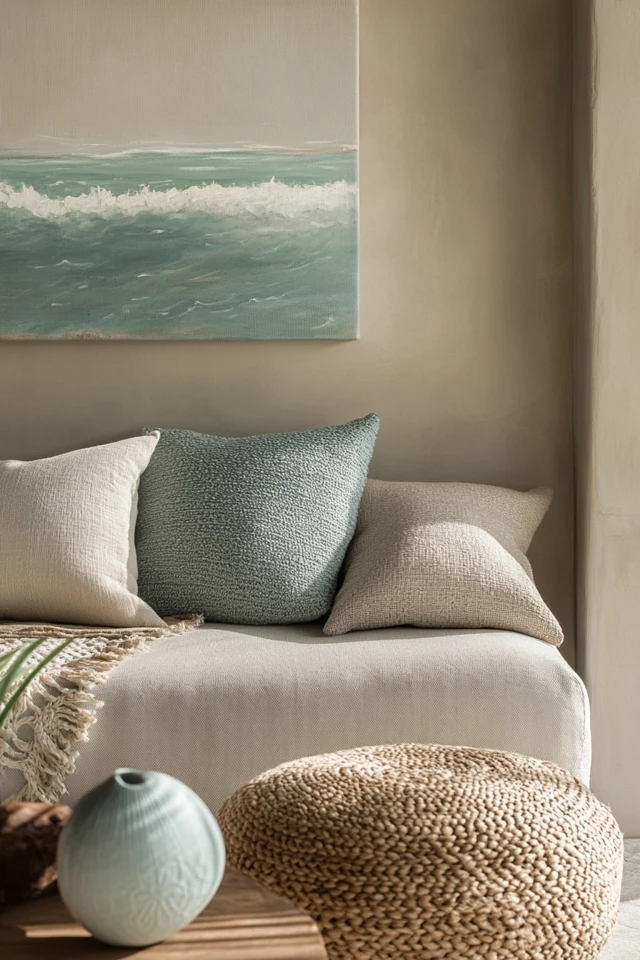
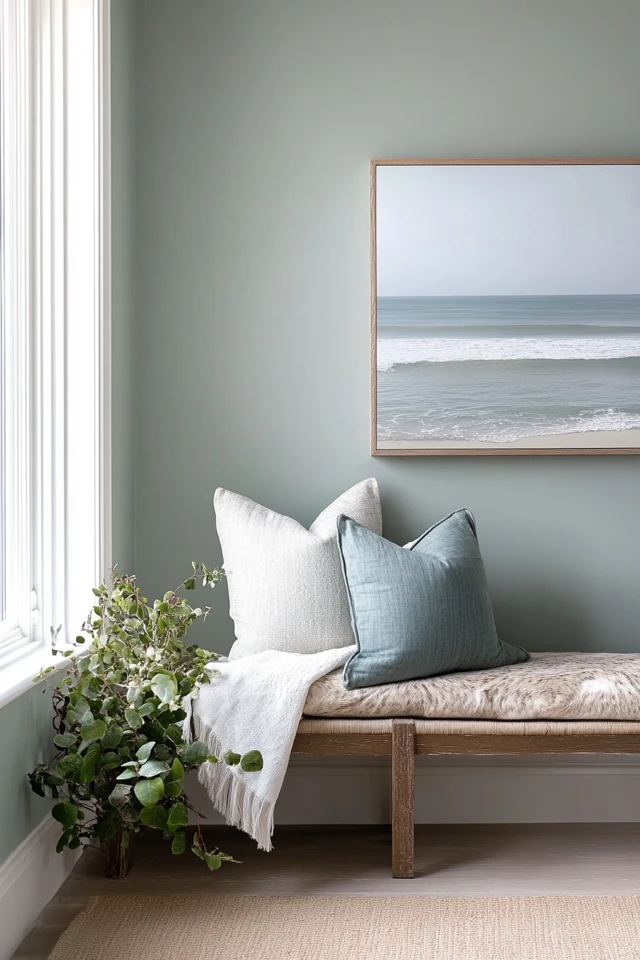
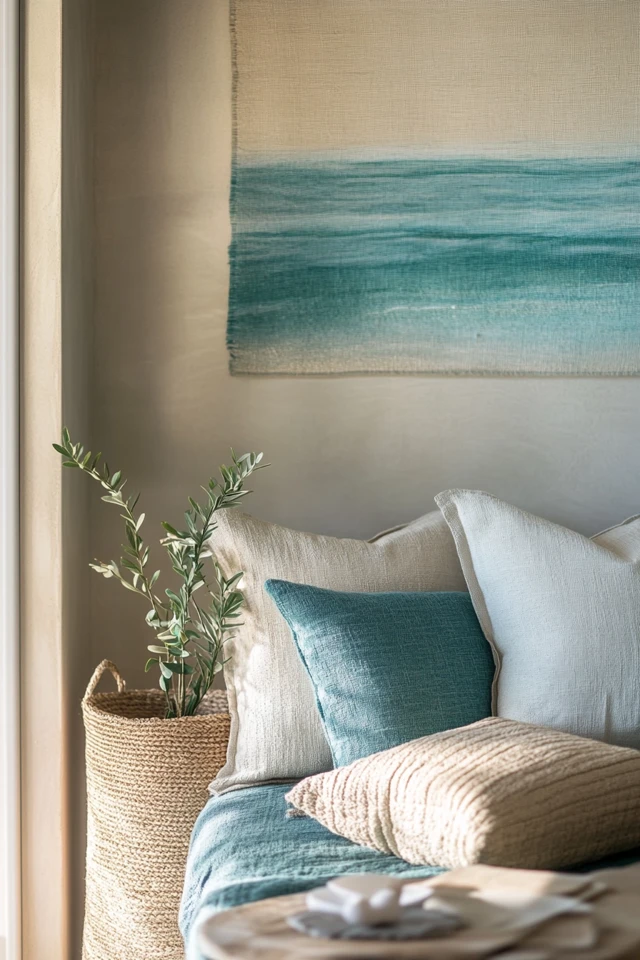
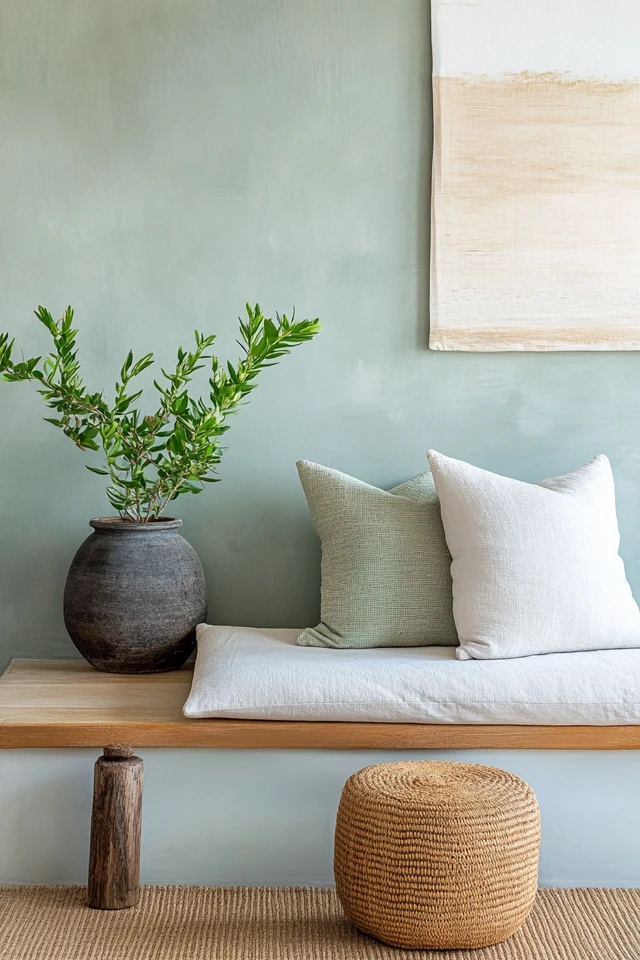
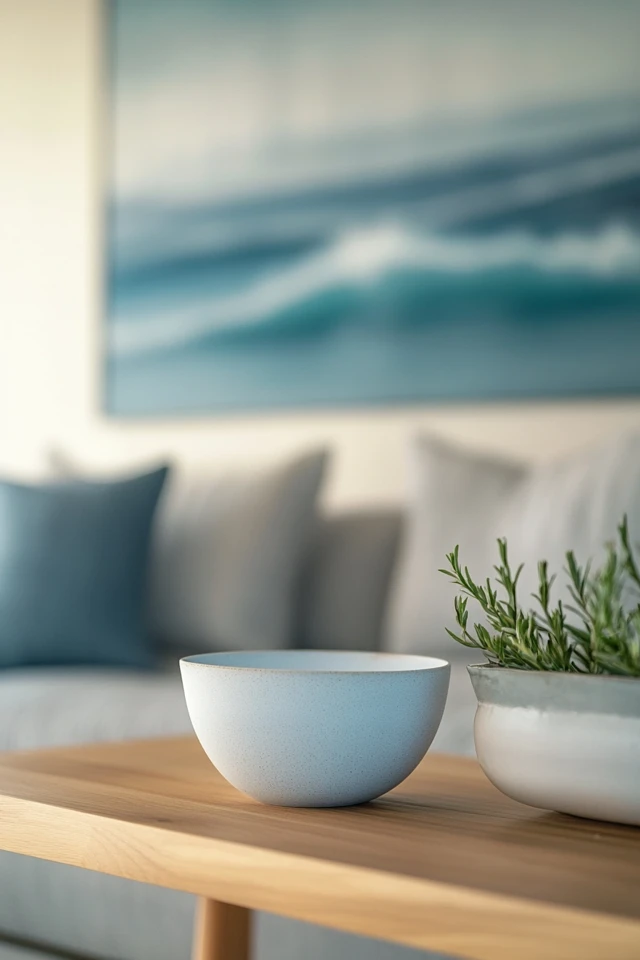
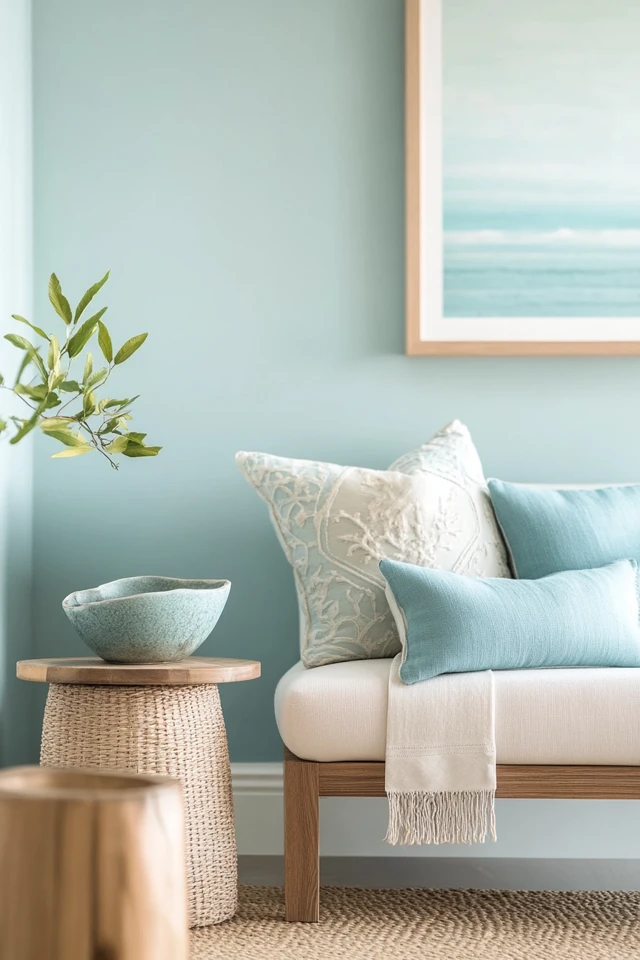
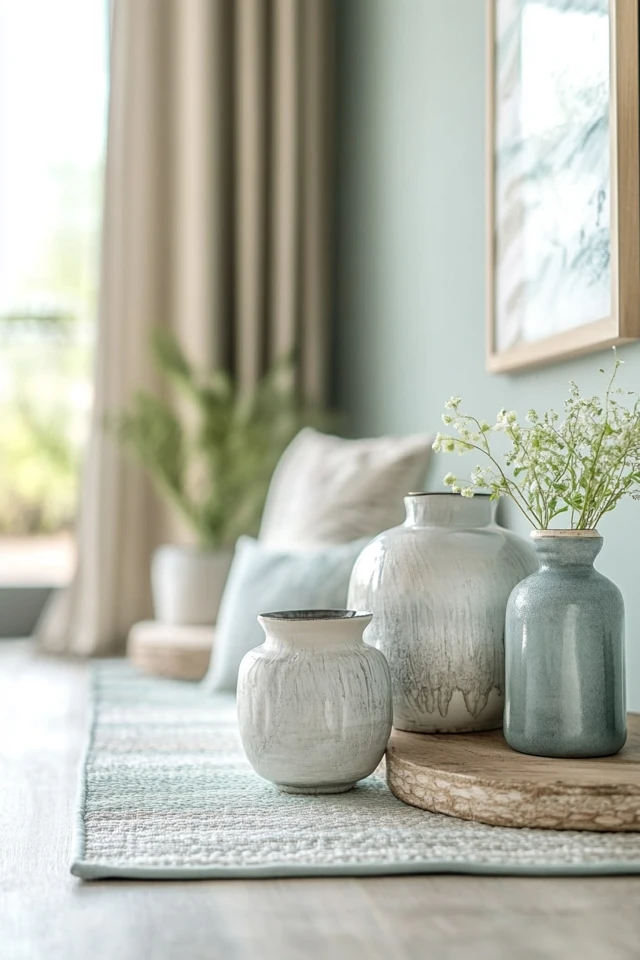
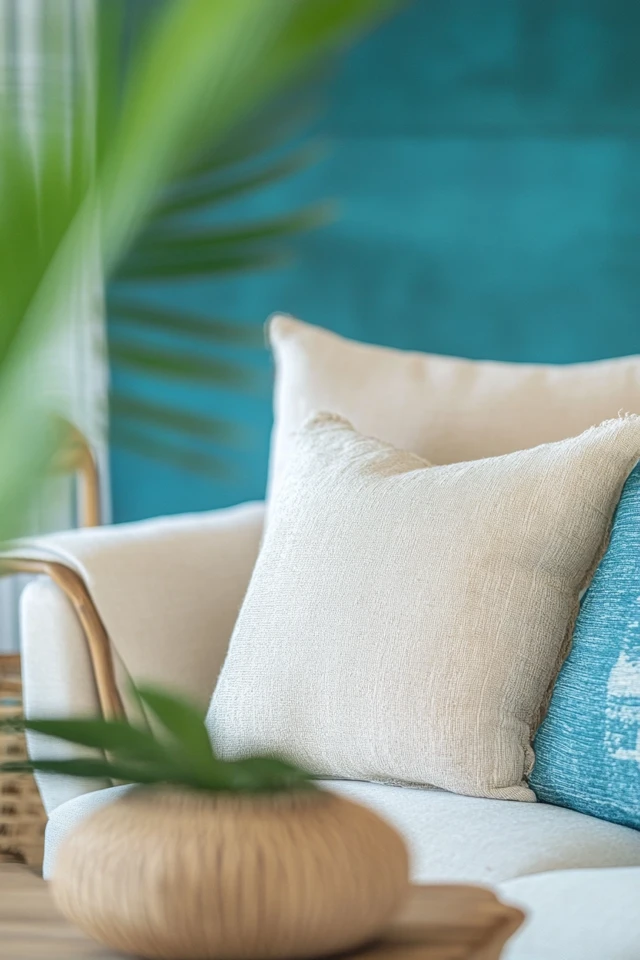
Conclusion
Using color to capture the coastal vibe in your room is a simple yet transformative way to bring the beauty and tranquility of the ocean into your home. By layering soft blues, sandy neutrals, and earthy tones, you can create a space that feels calm, refreshing, and timeless.
What I love most about coastal design is how adaptable it is—you can go bold with deeper blues or keep it light and airy with pastels and whites. Either way, your room will feel like a retreat. So grab that soft blue throw, place a few coral-inspired accents, and let your coastal transformation begin!
FAQ
What are the main colors in a coastal palette?
Coastal palettes typically include soft blues, whites, sandy beiges, seafoam greens, and warm earthy tones like terracotta or driftwood gray.
Can I create a coastal vibe without painting my walls?
Yes! Use textiles, artwork, and decor in coastal colors to transform the space without changing the wall color.
How do I avoid making a coastal room feel too themed?
Stick to subtle, nature-inspired colors and textures, and avoid overusing obvious nautical decor like anchors or ship wheels.
What’s the best way to add pops of color in a coastal room?
Incorporate coral, seafoam green, or soft yellow through throw pillows, rugs, or small decorative accents.
Is coastal design suitable for all spaces?
Absolutely! Coastal design works in bedrooms, living rooms, bathrooms, and even offices, thanks to its versatile and timeless appeal.

